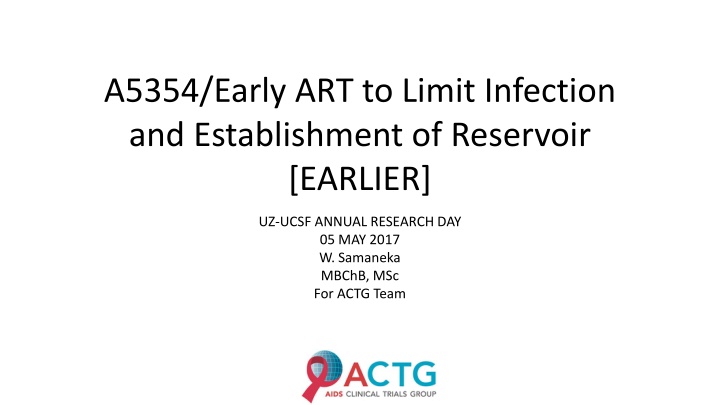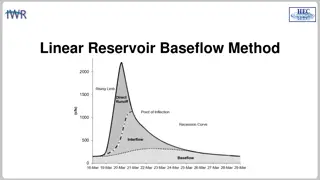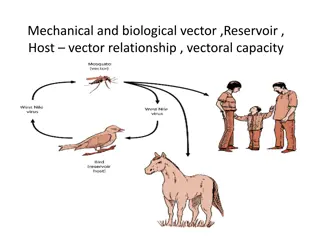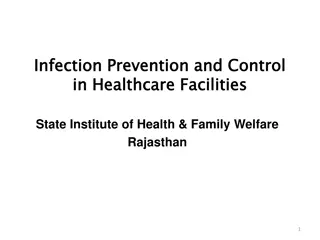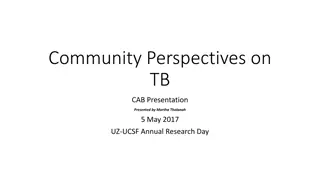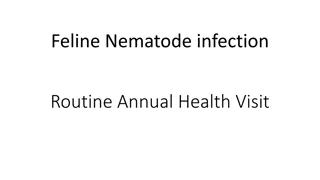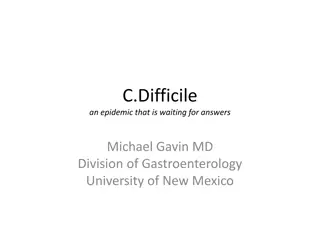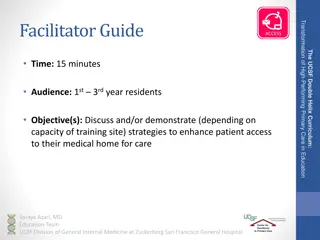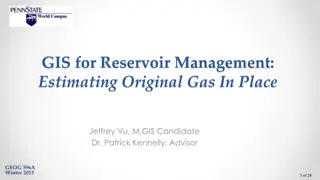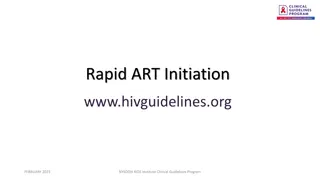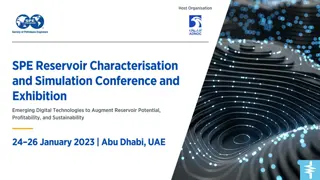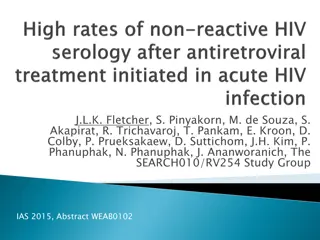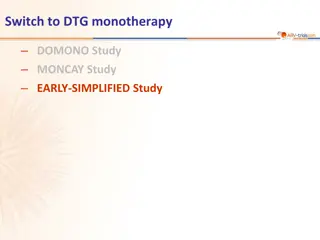Early ART to Limit Infection and Establishment of Reservoir - UZ-UCSF Annual Research Day
This presentation discusses the importance of early antiretroviral therapy (ART) in limiting HIV infection and establishing reservoirs in the context of the annual research day at UZ-UCSF. The speaker, Dr. Samaneka, MBChB, MSc, shares insights from the ACTG Team's work in this area, highlighting key strategies and findings to improve HIV treatment outcomes. Attendees will gain valuable knowledge on the impact of timely intervention in managing HIV transmission and persistence within the body. Overall, the focus is on advancing research efforts to enhance HIV care and prevention strategies.
Download Presentation

Please find below an Image/Link to download the presentation.
The content on the website is provided AS IS for your information and personal use only. It may not be sold, licensed, or shared on other websites without obtaining consent from the author.If you encounter any issues during the download, it is possible that the publisher has removed the file from their server.
You are allowed to download the files provided on this website for personal or commercial use, subject to the condition that they are used lawfully. All files are the property of their respective owners.
The content on the website is provided AS IS for your information and personal use only. It may not be sold, licensed, or shared on other websites without obtaining consent from the author.
E N D
Presentation Transcript
A5354/Early ART to Limit Infection and Establishment of Reservoir [EARLIER] UZ-UCSF ANNUAL RESEARCH DAY 05 MAY 2017 W. Samaneka MBChB, MSc For ACTG Team
Background Current evidence suggests that ART instituted early during acute HIV infection (AHI) is key to containing HIV reservoir establishment --its critical role in achieving HIV remission (Ananworanich et al 2015) ART initiation at different stages of AHI could predict magnitude and characteristics of HIV-reservoirs, quality and quantity of HIV specific immune responses. This knowledge will inform future immune -based strategies to eliminate latently infected cells.
Natural History of Untreated HIV Infection An, Ping et al. Trends in Genetics , Volume 26 , Issue 3 , 119 - 131
Clinical Symptoms of AHI H ggstr m M. Wikiversity Journal of Medicine 1 (2)
Usual Course of Treated HIV Infection Viral Setpoint Stop ART Start ART
Potential Course with Interventions Stop Stop ART ART
Stages of Acute HIV Infection (Fiebig Staging) RNA P24 Antigen Possible presence of P24 Antigen 4 3 Plasma Viral RNA (copies/mL) Y Specific EIA 2 Present on Western Blot 1 Y Y Days following HIV Transmission Adapted from CUREiculum
Establishing the Latent Reservoir Na ve CD4+ T cell HIV Latent Reservoir Activated CD4+ T cell Cell Death Cell Survival Resting Memory CD4+ T cell Adapted from D. Persaud and CUREiculum
HIV Reservoirs Stevenson. Scientific American 299, 78 - 83 (2008)
Why is Early ART Important? Is essential to prevent sexual transmission of HIV during acute infection One of the most effective ways to contain the HIV reservoir, preserve immunity and reduce immune activation May optimize responses to immune-based interventions aimed at achieving HIV remission May be a critical step in clinical research towards HIV cure Adapted from CUREiculum
A5354:Early ART to Limit Infection and Establishment of Reservoir (EARLIER) Will enroll 150 participants identified during acute HIV infection at ACTG sites. Fiebig stage-classification to characterize the progression from HIV-1 exposure to seroconversion at time of ART initiation. 50 Fiebig I/II 50 Fiebig III/IV 50 Fiebig V
A5354/EARLIER Participants will be offered immediate ART (within 48hr) Single tablet regimen (EVG/COB/FTC/TAF) Will evaluate reservoir size after 1 year of ART across a variety of body compartments.
Objectives To assess how starting ART as soon as the infection is found affects the amount of HIV-1 in blood and how well the body fights the HIV-1 infection. To measure the amount of HIV-1 DNA (genetic material for HIV-1) seen in CD4+ T-cells (infection-fighting cells in blood) after 48 weeks of ART To assess how early treatment for HIV affects the numbers of HIV-1 infection fighting cells (CD4+ and CD8+ T-cells) in blood
Eligibility Criteria 18 years and above Appropriate documentation from medical records of diagnosis of acute HIV-1 infection (AHI) within 7 days prior to enrollment.[Referrals from prevention trials] Ability and willingness to initiate ART at enrollment.
Important Exclusion Criteria Positive HIV-1 antibody test 90 days prior to study entry.(outreach.. CAB) AHI diagnosis within 60 days after receiving any investigational ARV or HIV-1 vaccine or immune prophylaxis for HIV-1 infection Initiation of ARVs for PREP and PEP within 60 days prior to diagnosis of AHI
Study Status Enrolling (Jan 27, 2017) 27/150 enrolled Pari CRS target enrolment 15 participants.
Site readiness JREC, MRCZ and MCAZ approvals Awaiting RCZ approval Webinar training done Target activation date May 2017
Acknowledgements NIAID Gilead Sciences UZ-UCSF leadership Prof JG Hakim CAB ACTG Team
